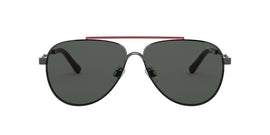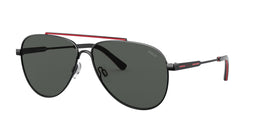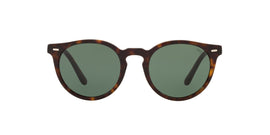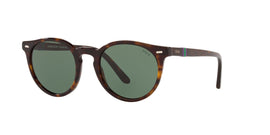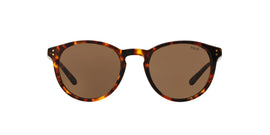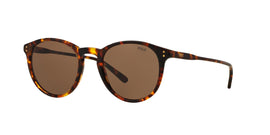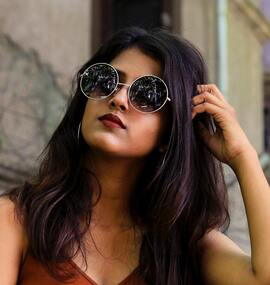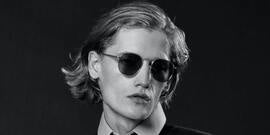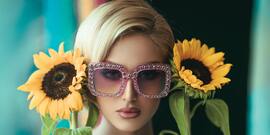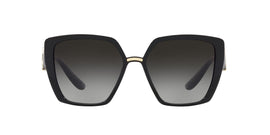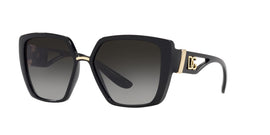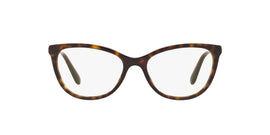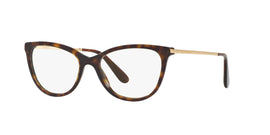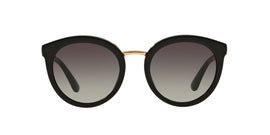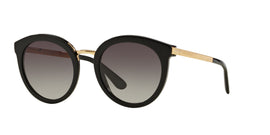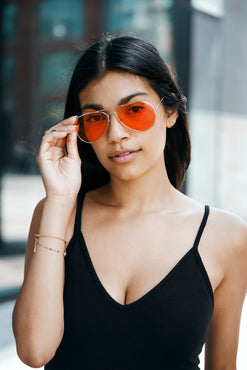When you go through its extensive celebrity-sighting roster, its devoted fan base, and the sheer frequency of run-ins with its signature mirrored-lensed frames, it’s hard to believe Krewe has been around since only 2013. It’s also wild to consider that the CFDA/Vogue Fashion Fund finalist (and 2016 runner-up) hasn’t left its home base of New Orleans and yet has achieved a level of international renown not commonly achieved by New York, London, or Paris-based brands—let alone in year four of its business. But scroll through Instagram, and you’ll stumble upon its range of #KreweMuses, a wide assortment of unimpeachably cool folks who have woven the brand’s handmade frames into their signature looks. Clearly, it’s doing something right.
Krewe invited Glamour down to its home base in Louisiana to learn more about its highly recognizable frames (and the cult following the brand has developed, down by the Mississippi River and beyond). While there, we caught up with the man behind the celebrity-favorite brand, Stirling Barrett, and got his no-fail tips for finding the right pair of frames for you. Read on—and take notes.
Don’t Concern Yourself With a “Trend”
“Eyewear, as a whole, is less trend-reactionary than ready-to-wear,” Barrett says. Whereas apparel trends come in and out on a seasonal basis, there’s a slower burn when it comes to frames, he argues: “You can say mirrored lenses are a trend, [but they’ve] been a trend for 10 years. There’s a longer trend cycle in eyewear.” That’s partly due to the longer manufacturing process—a pair of handmade frames takes anywhere between four to six months to make, according to Barrett—so each brand instead homes in its own aesthetic and signature, as opposed to following in what “trend” is on the horizon.
For Krewe, it’s always been about round shapes and mixed materials, and how it can iterate and build upon those traits and, hopefully, be ahead of a trend cycle. “Now we’re making titanium frames with slightly little bits of acetate, instead of acetate frames with a little bit of metal—that’s what we’re seeing more of in the collection,” teases Barrett. Another thing you can expect in the near future: nylon lenses “you can actually carve and do really interesting things with.” Plus, the designer is psyched about the undersize rectangular shape we’ve been seeing on celebrities like Bella Hadid and Kendall Jenner—“universal shape with a very edgy look,” as he describes it—so who knows? It may be coming soon to a Krewe stockist near you.
Treat Eyewear as an “It” Piece
“Eyewear is the new handbag: You want it to be in your selfie, you want it to feel unique,” Barrett argues. “But as soon as all your friends have it, it’s saturated.” It goes back to this idea of rebuking trends: In order to find the right frame, it’s best to seek out a product that you’ll wear beyond a single season, one that you can weave into your wardrobe for years to come. “Our thing has always been modern iconic design—whether it’s the store, the Tiny House built to French Quarter code… That’s where it all started,” Barrett says. “I want you to feel very comfortable in the frame—almost like something that your mom or dad would have worn in your childhood, but in a very modern way.”
To encourage a shift in consumer behavior, Krewe has moved away from biannual collections, instead opting to release new designs in more of a drop structure: “smaller quantities, more often,” per Barrett. “Our goal next year is to have one to two launches a month—you’ll have new product either in new colors or frames, or older things that are back in style. Less of a collection, more fluidity.”
However, when it comes to signatures, Barrett can’t deny the unflinching popularity of Krewe’s St. Louis frame. “It embodies the brand by being different yet comfortable,” he says of the style worn by Gigi Hadid, Nina Dobrev, Dakota Fanning, Emma Watson, and countless other celebrities. “It personifies our philosophy of metal and acetate integration, and it’s a great example of New Orleans’ spirit and the French Quarter wrought-iron architecture that inspires the frame. It represents the brand in a really cool way.”
Use Lens Shapes as a Guide to Try New Styles
When it comes to eyewear, many of us are creatures of habit: Once we find a shape we like—be it Wayfarers or oversize round—we stick to it for years on end. However, Barrett wants shoppers to venture out of these self-imposed boxes, if only because it’s a lot less intimidating than it appears. For instance, you might be put off by a brow-heavy, mixed-material frame on the shelf, but it might actually have the same shape as your go-to aviators, and would thus look just as good on your face. “It’s still that identity at its core. If you see that somebody picks up a round, classic, round frame, like a Toulouse, and [the sales rep] is like, ‘Oh it’s not so great,’ and you put them in a Conti, which is a super-trendy, one-brow kind of thing, that’s the same frame shape. They would have never picked it off the board, but they’re just as excited about.” Don’t be afraid to phone a friend (or your friendly sales representative).
Think About Face Shape (but Don’t Let It Hold You Back)
Face shape is often cited as the first consideration when buying eyewear. Barrett stresses the importance of it when trying on frames—“that’s really the way to get a great fit,” he says—but it shouldn’t be the sole deciding factor.
“You’re putting something on your face that literally changes the way people see you—if you have a round or oval face and you put a cat eye on, it’s going to extend it up and make it feel more like a triangle, more elegant,” he explains. “Oval is the most universal face shape; you can wear anything from oversize to small. But other face shapes—like heart-shaped, square, rectangle or diamond—are more difficult to pull all styles off.”
Think about what you want your eyewear to do for your face—if you want to elongate, if you want to bring attention to a specific area, and so forth—and use the silhouette to achieve that goal. Shopping for eyewear according to face shape is “not something that you can’t break, but it’s something that can really help you feel like you look great in a frame,” Barrett notes.
Pay Attention to Celebrity Sightings (No, Really)
Nowadays there’s a myriad of websites, Instagram accounts, and other platforms for fans to document each and every outfit credit on their favorite celebrities. These are not only useful for coping your favorite’s go-to looks, but also for deciphering what the best eyewear is for you. “I often think that celebrity sightings aren’t just great for brand exposure but are also for our clients,” says Barrett. For instance: If you can’t make it out to one of Krewe’s stores (in New Orleans and New York) or vendors to try a frame out in person but know that you have a comparable face shape to some celebrity recently spotted in the brand, you can use that to guide your shopping online. What’s more, it’s also a great tool when you want to venture from your usual shapes. “If you know that Gigi or Beyoncé looks good in a frame that you already have, and then see them wearing a different pair of Krewe, it might make you wonder if you would also look good in that additional frame,” notes Barrett. “Being able to equate sightings like that is good.”
Don’t Rule Out Colored Frames as Too Out-There
As far as outdated eyewear shopping tips go, Barrett has one he’s particularly over: that black acetate is a “neutral” option—and less invasive than, say, a colorful plastic. “If you have a thick black frame, that’s going to look so much more in your face than a thin, red frame would ever,” he argues. “That’s a standout moment—why don’t you try something that’s a little more unique?” So whenever you feel compelled to reach for the tried-and-true Tina Belcher look, consider swapping the material of your frames for a color outside of your immediate comfort zone, like a speckled or frosted acetate. “I always encourage people to step out of their comfort zone of black or tortoise and try something a little different and think about their skin tone when choosing a frame,” Barrett says.
Remember that Optical and Sunglasses Are Two Different Beasts
Whereas you can be a little bit more experimental when you’re shopping for sunglasses, remember that, if you need glasses, it’s a prescription service first—“your eye has to fit inside the lens in a certain place, and the prescription has to fit in the frame in a certain way,” Barrett says. That might affect the number and types of frames available to you, depending on what you need out of them. “While all of our product is prescription-ready, not all of it might be right for your prescription.”




